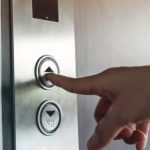 Weird Stuff
Weird Stuff  Weird Stuff
Weird Stuff  Our World
Our World 10 Archaeological Discoveries of 2025 That Refined History
 Weird Stuff
Weird Stuff 10 Fascinating Facts You Might Not Know About Snow
 Miscellaneous
Miscellaneous Top 10 Things Crypto Was Supposed to Change & What Actually Did
 History
History 10 Huge Historical Events That Happened on Christmas Eve
 Music
Music 10 Surprising Origin Stories of Your Favorite Holiday Songs
 History
History 10 Less Than Jolly Events That Occurred on December 25
 Weird Stuff
Weird Stuff 10 Funny Ways That Researchers Overthink Christmas
 Politics
Politics 10 Political Scandals That Sent Crowds Into the Streets
 Weird Stuff
Weird Stuff Ten Bizarre Facts About The Doge Meme
 Weird Stuff
Weird Stuff 10 Weird Things People Used to Do at New Year’s
 Our World
Our World 10 Archaeological Discoveries of 2025 That Refined History
 Weird Stuff
Weird Stuff 10 Fascinating Facts You Might Not Know About Snow
Who's Behind Listverse?

Jamie Frater
Head Editor
Jamie founded Listverse due to an insatiable desire to share fascinating, obscure, and bizarre facts. He has been a guest speaker on numerous national radio and television stations and is a five time published author.
More About Us Miscellaneous
Miscellaneous Top 10 Things Crypto Was Supposed to Change & What Actually Did
 History
History 10 Huge Historical Events That Happened on Christmas Eve
 Music
Music 10 Surprising Origin Stories of Your Favorite Holiday Songs
 History
History 10 Less Than Jolly Events That Occurred on December 25
 Weird Stuff
Weird Stuff 10 Funny Ways That Researchers Overthink Christmas
 Politics
Politics 10 Political Scandals That Sent Crowds Into the Streets
 Weird Stuff
Weird Stuff Ten Bizarre Facts About The Doge Meme
10 Natural Rock Formations That Will Make You Do a Double Take
Earth is incredible. Not only is it the only planet in our galaxy that can sustain life but it also recycles its own crust.
Around 71% of Earth’s surface is covered in water, including oceans, seas, lakes, and rivers. The rest is made up of things like mountains, forests, man-made structures, and natural rock formations.
These natural formations result from millions of years of wind and water, shaping them into weird and wonderful masterpieces. Some resemble familiar objects, while others are just abstract enough to spark the imagination. Here are 10 rock formations that are worth visiting.
Related: Top 10 Must-Visit Natural Wonders
10 Princess of Hope, Pakistan
The enigmatic Princess of Hope rock formation in the Hingol National Park, situated in Lasbela in Balochistan, Pakistan, looks like it was carved by human hands. In reality, the rock is a fairy chimney formed by heavy rainfall and strong ocean winds from the Arabian Sea over more than 750 years.
Regardless of this reality check, it is easy to see why people believe the rock is actually a young woman staring out at the horizon, dressed in a long flowing skirt. The stunning formation was named the Princess of Hope by Angelina Jolie, who was mesmerized by it after visiting the park in 2002.
The Princess’s only companion in the stark but beautiful landscape of the Lasbela district is another natural rock formation that has taken on the shape of a sphinx. While most scientists agree that the Balochistan Sphinx is a rock shaped by the elements, some believe that the sphinx was intentionally carved and is meant to guard the remains of a Hindu temple.[1]
9 Elephant Rock, Iceland
Along the Heimaey coast of Iceland, another incredible rock formation stands guard over the ocean, or rather, in the ocean. The aptly named Elephant Rock looks exactly like an elephant’s head, with its trunk dipping into the water.
Much like the Balochistan Sphinx, many people are not convinced that Elephant Rock is a natural formation, primarily because of the color of the basalt rock. However, experts believe that Elephant Rock and the other rock formations on Heimaey are the result of the many eruptions of the Eldfell volcano.
Some people don’t even see an elephant when they look at the rock formation from a specific angle. They often find the features of the mythical Cthulhu within the rock creases. Cthulhu is a monstrous character created by H.P. Lovecraft in the 1920s.
Whether you see a terrifying beast or a majestic elephant, you will also spot real-life animals in the area. The waters surrounding Elephant Rock teem with marine life, including orcas and dolphins. Heimaey is also home to the planet’s largest puffin population—another reason to book that ticket to gorgeous Iceland.[2]
8 Wave Rock, Australia
Australia boasts its own quirky rock formations. These include the imposing Sawn Rocks in Mount Kaputar National Park, which resemble giant organ pipes, and the Pinnacles, which give the Western Australian landscape an alien look.
Then there is Wave Rock. This 50-foot (15-meter) tall natural wonder is culturally important to the Ballardong people. The local tribes believe that the Rainbow Serpent created the rock, which resembles a breaking ocean wave. It is said the serpent drank all the water in the area and then dragged her bloated body over the ground toward the waterhole, with Wave Rock forming in her wake.
Wave Rock lies in the Golden Outback and has been dated by geologists as more than 2.6 billion years old. This means It was created by erosion and weathering long before dinosaurs left tracks on Earth. The yellow, grey, and red stripes that make Wave Rock even more striking come from carbonates and iron hydroxide washed down the slope when it rains.[3]
7 Bucegi Sphinx, Romania
The Bucegi Sphinx is a rather creepy-looking rock formation in Romania’s Bucegi Mountains. Because of its strange look, some people believe aliens shaped the rock.
Scientists, however, confirmed that wind erosion carved the human-like face of the rock over time. The Sphinx was photographed for the first time in 1900 but only got its nickname 35 years later. The sphinx shape does not appear when you look at the rock straight on. The outline becomes clear when you look at it from a specific sideways angle.
This “shape-shifting” has given rise to several theories about the Bucegi Sphinx. One of these says that it came before the Egyptian Sphinx. Another theory claims a time tunnel or so-called “energy corridor” exists between the two sphinxes. Some also believe that on November 28, the rays of the setting sun form an energy pyramid over the face of the Bucegi Sphinx. People often gather here on this date to get some of this energy for themselves.[4]
6 Shiprock, New Mexico
Shiprock in New Mexico is both sacred and dramatic. It is located on Navajo Nation land and rises from a barren desert landscape toward the sky. This landform is the remains of a volcanic eruption that occurred over 30 million years ago.
In Navajo, the rock is called Tsé Bitʼaʼí, which means “winged rock.” This beautiful natural formation takes up a notable place in Navajo Indian mythology. In one tale, the rock was once a giant bird that transported the Navajo from the northlands to the Four Corners.
The legend of the bird says that the Navajo shamans prayed for a way out when the ancient Navajos were running away from another tribe. The ground transformed into an enormous bird that carried the Navajo on its back to safety. The bird landed on the spot where Shiprock now stands just as the sun went down.
However, the bird could not rest because it was almost immediately attacked by a dragon-like creature called Cliff Monster. Cliff Monster trapped the bird on the spot. The Navajo sent help in the form of Monster Slayer, who promptly cut off Cliff Monster’s head. He tossed the head a huge distance away, where it turned into Cabezon Peak.
Sadly, the bird was gravely injured during Cliff Monster’s attack, and Monster Slayer turned the bird into stone to keep it alive. Today, when viewed from certain angles, Shiprock resembles a massive bird with folded wings. However, from another angle, the rock also resembles 19th-century clipper ships, which is why it has been called Shiprock since the late 1800s.[5]
5 Kilt Rock, Scotland
What are the odds that a rock formation in Scotland would take on the shape of a kilt, of all things? Very good, since the stunning 195-foot (90-meter) high basalt and dolerite Kilt Rock is a real geological and multicolored wonder on the Isle of Skye.
Formed by volcanic activity over millions of years, the hexagonal rock columns resemble the pleats on a kilt. These columns make for a gorgeous view, especially because of the 197-foot (60-meter) Mealt Falls, which drops straight into the Sound of Raasay next to Kilt Rock.
Kilt Rock and the Mealt Falls are not the only attractions on the Isle of Skye. There is also the Old Man of Storr, a 180-foot (55-meter) high basalt rock formation that is said to be an ancient slain giant’s thumb. It is all that remained of the giant as the ground swallowed him up where he fell. However, according to another version of the legend, it is not the giant’s thumb sticking out of the ground…[6]
4 Old Harry Rocks, England
The Old Harry Rocks near Dorset make for an unforgettable sight. But the devil is in the details, as they say. According to legend, these three chalk sea stacks once made a comfortable bed for Old Nick (or Old Harry). Another tale says that Old Harry Rocks were named after pirate Harry Paye.
Paye apparently used the rocks as a hiding place for his own ship while waiting for merchant ships to pass. He attacked these ships and stored his loot in nearby sea caves.
In real life, these massive rock formations indicate the end of the infamous Jurassic Coast. They have been around for 65 million years and were once used by WW2 pilots for target practice.
The most distinctive stack still standing is Old Harry, while another stack, Old Harry’s Wife, collapsed in 1896. Eventually, Old Harry will also collapse, leaving only a stump behind.[7]
3 Seven Strong Men, Russia
The Manpupuner rock formations, or Seven Strong Men, stand on the Man-Pupu-nyor mountain between the Pechora and Ilych rivers in the Pechora-Ilych Nature Reserve in Russia. These massive stone pillars are believed to have been created by snow, frost, heat, and wind. These elements eroded what was once mountain ranges to create the formations. Six of the pillars sit at the edge of a cliff while another stands apart.
The Seven Strong Men are reminiscent of the Easter Island Moai. They, too, stand in contrast with their environment and give off a vibe of belonging to a mysterious civilization. Some people believe that the Manpupuner formations are linked to the Arctic Circle, while local urban legends tell the story of specters and spirits gathering in the area thousands of years ago.
According to the Mansi tribe, the ground on which the formations stand is sacred. And because the rocks sometimes make unexplained sounds, some believe they are the remains of Samoyed giants who once wanted to destroy the Mansi (or Voguls as they were formerly known).
While on their way, the shaman who led the procession spotted the scared Yalping-Ner mountain. In fear, the shaman dropped his drum, which started rolling until it formed a conical mountain (Koyp). The giants became terrified at the sight of this and instantly turned to stone. To one side, the shaman also turned to stone.[8]
2 Pulpit Rock, Norway
Norway boasts quite a few mind-blowing rock formations. There is the infamous Trolltunga that tourists can reach via a grueling 10-hour hike. Fortunately, a toll road introduced in 2017 makes it much easier to get there. Norway is also home to Kjerag, which you should NOT visit if you have an extreme fear of heights.
Then, there is Pulpit Rock (Preikestolen), which towers above the gorgeous Lysefjord at a steep 90-degree angle. The cliff is over 1,968 feet (600 meters) high, which makes for a dizzying view from the top. The flat plateau at the top has seen visitors come and go for more than 100 years.
It is said that Thomas Peter Randulf did an actual double take in 1896 when he spotted the awe-inspiring natural formation while cruising the fjord. He immediately decided to hike to the top, taking his friend Ole Hausken along. It took them several days, but they finally made it with the help of three locals.
By the turn of the 20th century, Pulpit Rock was no longer an obscure sight. Tourists began flocking to the area, and as their numbers increased, so did the number of guest houses that popped up along the hiking trail.
Today, Pulpit Rock is one of Norway’s most popular hiking destinations. It is still undergoing the geological processes that shaped it, albeit at a much slower rate. It is also one of Norway’s most iconic nature symbols. It is seen as a celebration of the best of what the country’s wilderness has to offer.[9]
1 The White Desert, Egypt
Egypt’s White Desert National Park is filled with weird and wonderful chalk and limestone rock formations. Like most others, these formations are shaped by sand and wind erosion.
Most tourists plan their White Desert visit for dawn or sunset. During these times, the rocks seem to take on even more fantastical shapes. These include towering mushrooms in pink and orange hues as the first or last sunrays scatter over them.
Some of the rocks look like chess pieces, and others look like closed igloos. Under a full moon, they become ghostly white. Many tourists see camels or even human faces in the formations then, as the moonlight highlights their shapes.
During the Cretaceous period, the White Desert was covered by a shallow sea. The water deposited the chalk and limestone layers that make up the rock formations. Over time, the sea receded, exposing the rocks. There are still many sandstorms in the area, which continue to erode these rocks.
And below the desert sand lie hidden seashells from ancient times and fossils of prehistoric marine creatures. In an effort to protect this historical wonder, Egypt’s government and several conservation groups work hard to preserve its natural beauty. This also ensures that visitors will be enchanted by this almost alien landscape for many years to come.[10]








